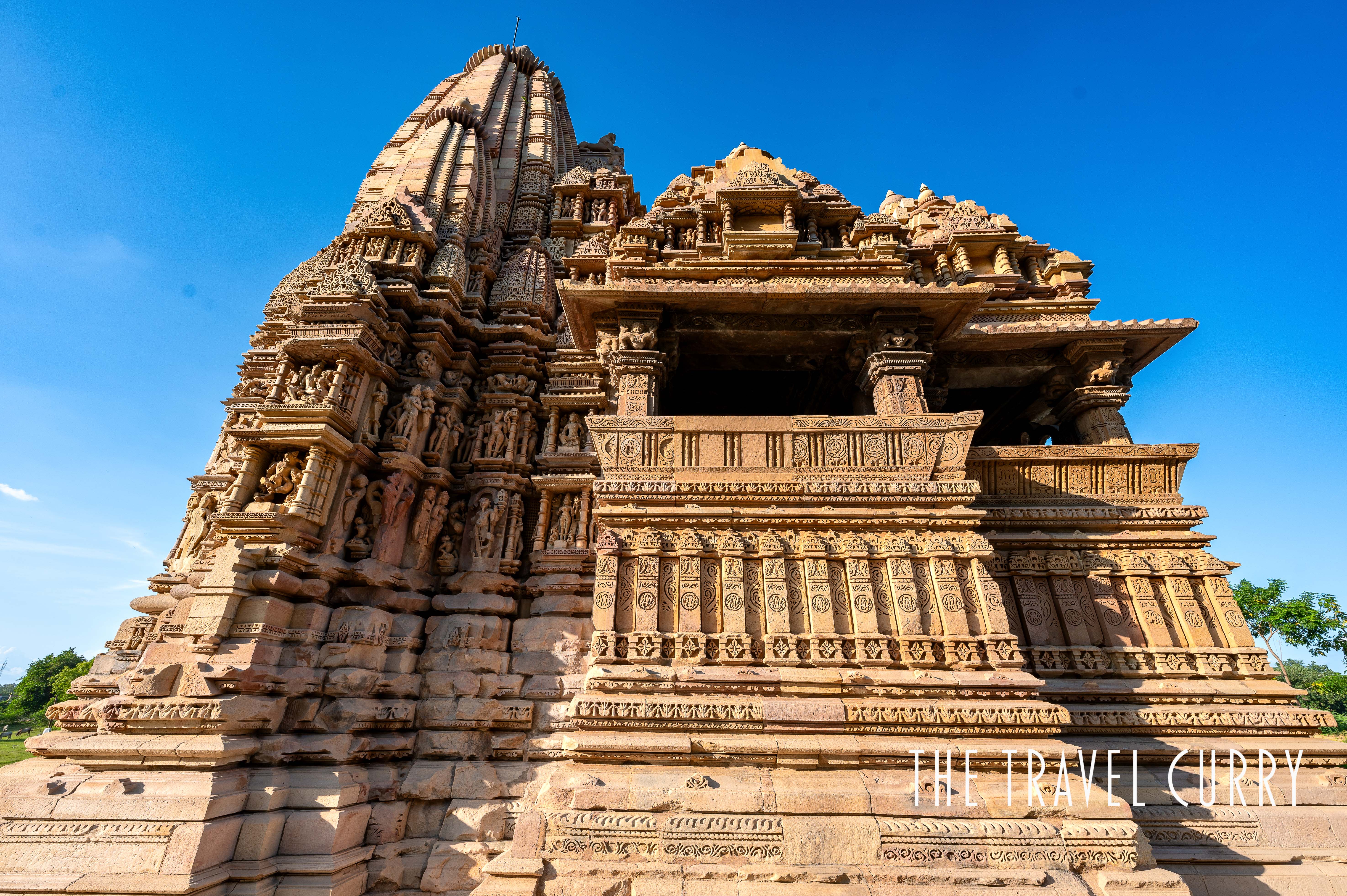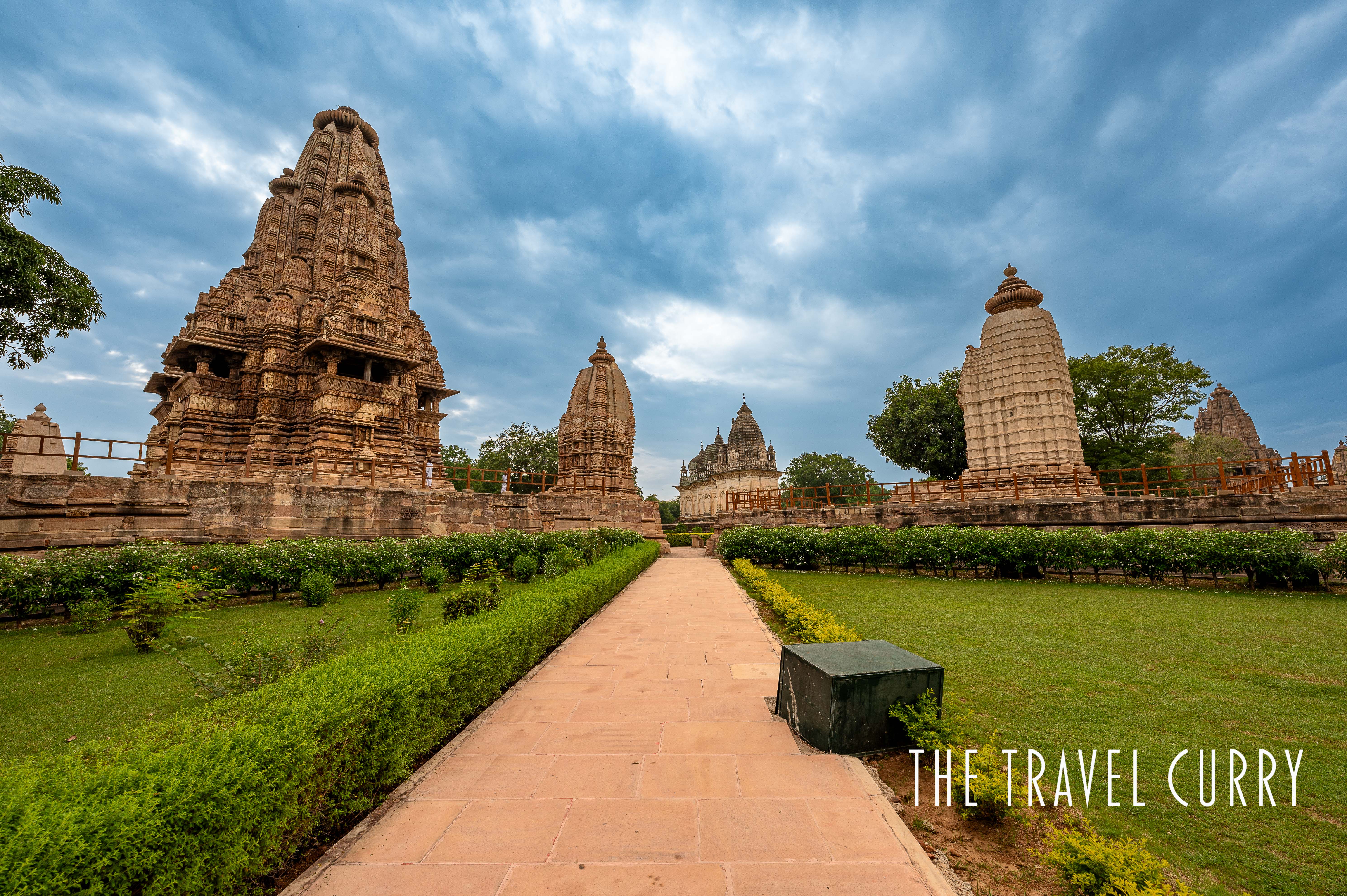
In the heart of India in Madhya Pradesh lies the small town of Khajuraho, renowned for its unique temples. Khajuraho temples were built during the Chandela dynasty between 950 and 1050 AD. An amalgam of intricate architecture and exotic sculptures, this UNESCO World Heritage site attracts tourists from across the world. In this detailed guide to Khajuraho temples, we will explore the ancient structures and everything you need to know while visiting the city.
Groups of temples, Entry fee
Khajuraho temples are classified into three main groups: Western, Eastern, and Southern. The Western Group of temples as protected monuments are currently under the wing of ASI. Visitors need to buy tickets only for the Western group of temples. There is no entrance fee for the Southern and Eastern group of temples. You can make an online booking to jump the queue.
Among the surviving temples in Khajuraho, six devoted to Shiva, eight to Vishnu and his affinities, one to Ganesha, one to Sun god, and three to Jain Tirthankars.
Temple timing
All temples open at sunrise and shut at sunset. This is applicable across all the groups of temples. The light and sound show takes place in the Western Group of temples after sunset for which there is a separate fee.
Exploring the temples
The Western Group of Temples
The Western Group of temples is the most famous and visited group in Khajuraho. It includes some of the most elaborately carved and well-preserved temples. The major temples in this group are as follows:
Kandariya Mahadev Temple
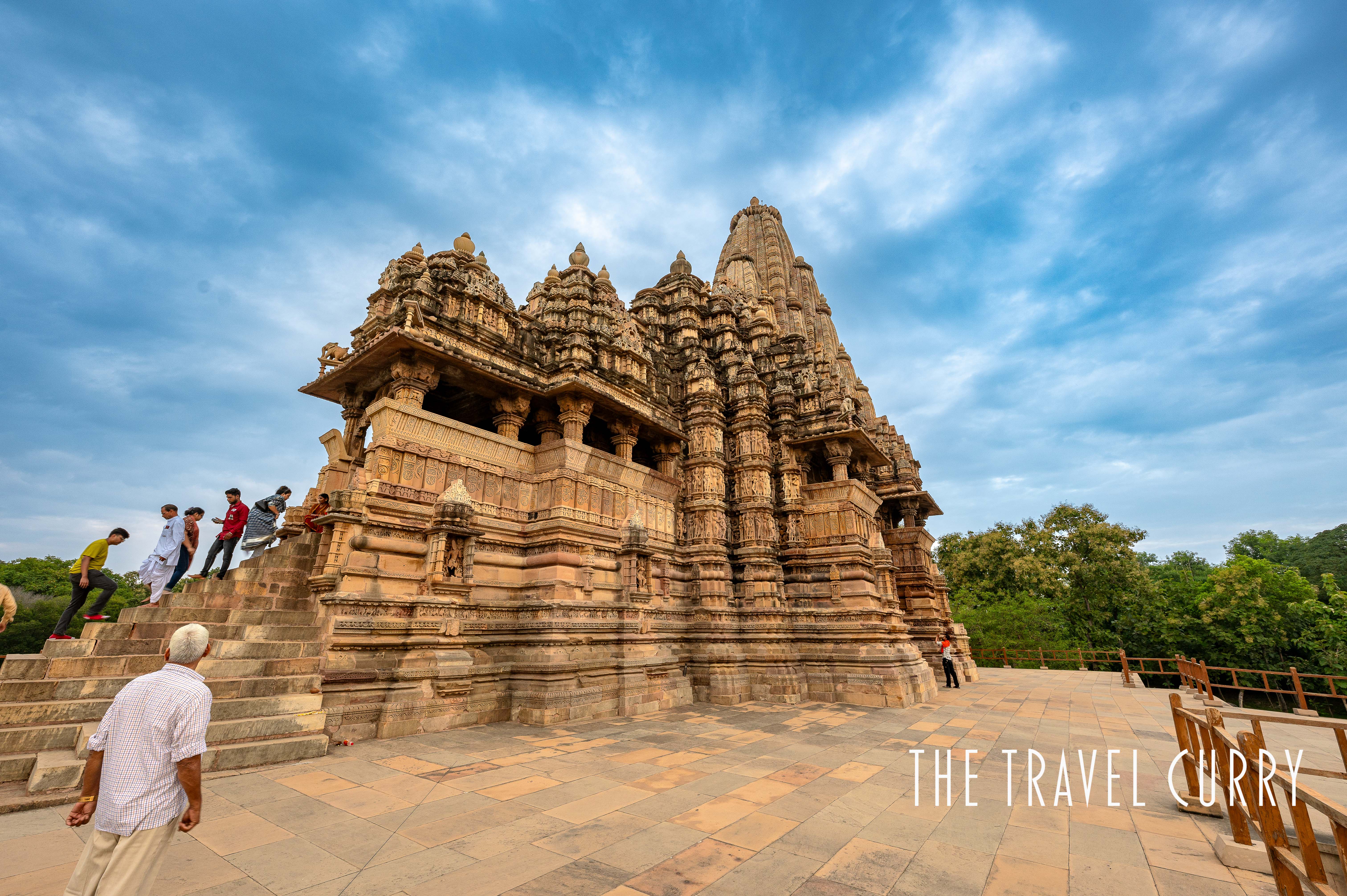
This is the biggest and the most visited temple in Khajuraho. Kandariya Mahadev Temple is built on a plan of 31 metres (102 ft) in length and 20 metres (66 ft) in width. This temple is devoted to Lord Shiva. The sanctum receives very little natural light, hence creating an illusion of a cave. In addition, the temple exterior walls has exotic sculptures that are renowned world-wide.
Jagdambi Temple
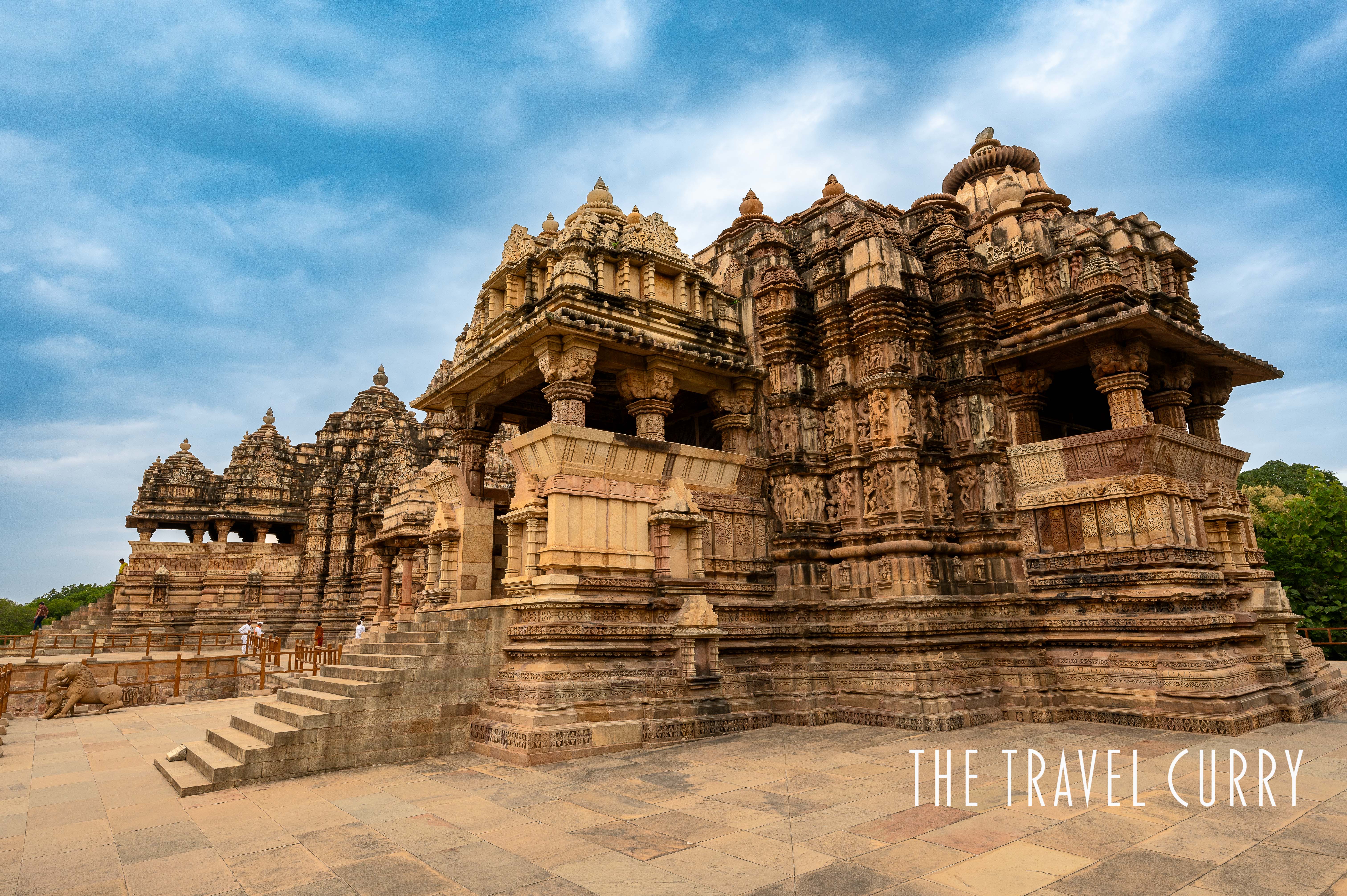
This temple shares the same platform as Kandariya Mahadev, adjacent to the former. The sanctum has an image of Devi Parvati. However, it is believed this temple was dedicated to Lord Vishnu originally. This is one of the most ornate shrines among all Khajuraho temples.
Lakshmana Temple
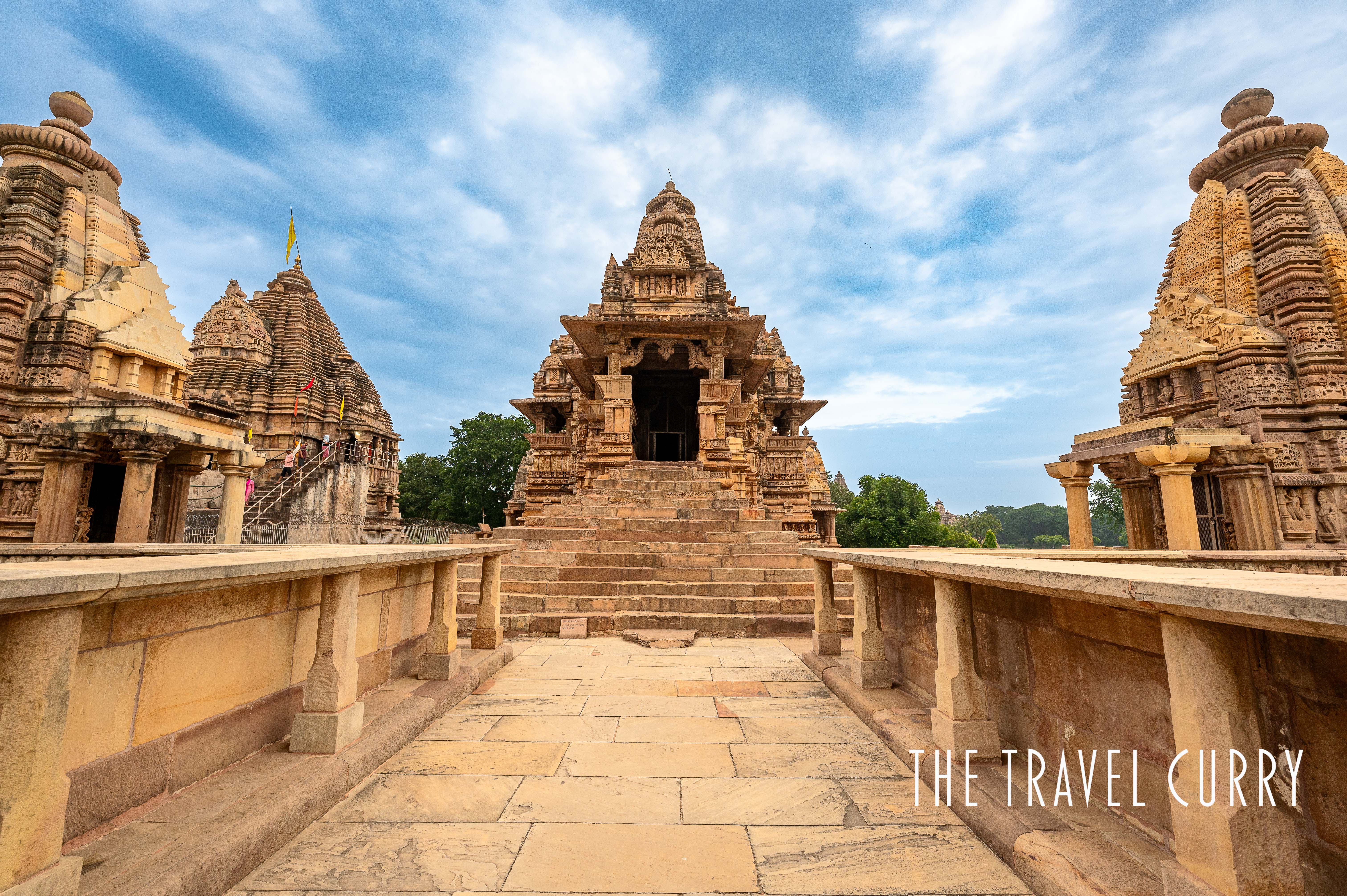
Another grand and ornate temple in Khajuraho is Lakshmana Temple. Dedicated to the Lord Vishnu, this temple stands on a high platform. The exterior is surrounded by celestial figures, erotic stories, and elements of nature. The sanctum has a four-armed sculpture of Vishnu with 3 heads. Lakshmana Temple was our favorite.
Chausath Yogini Temple
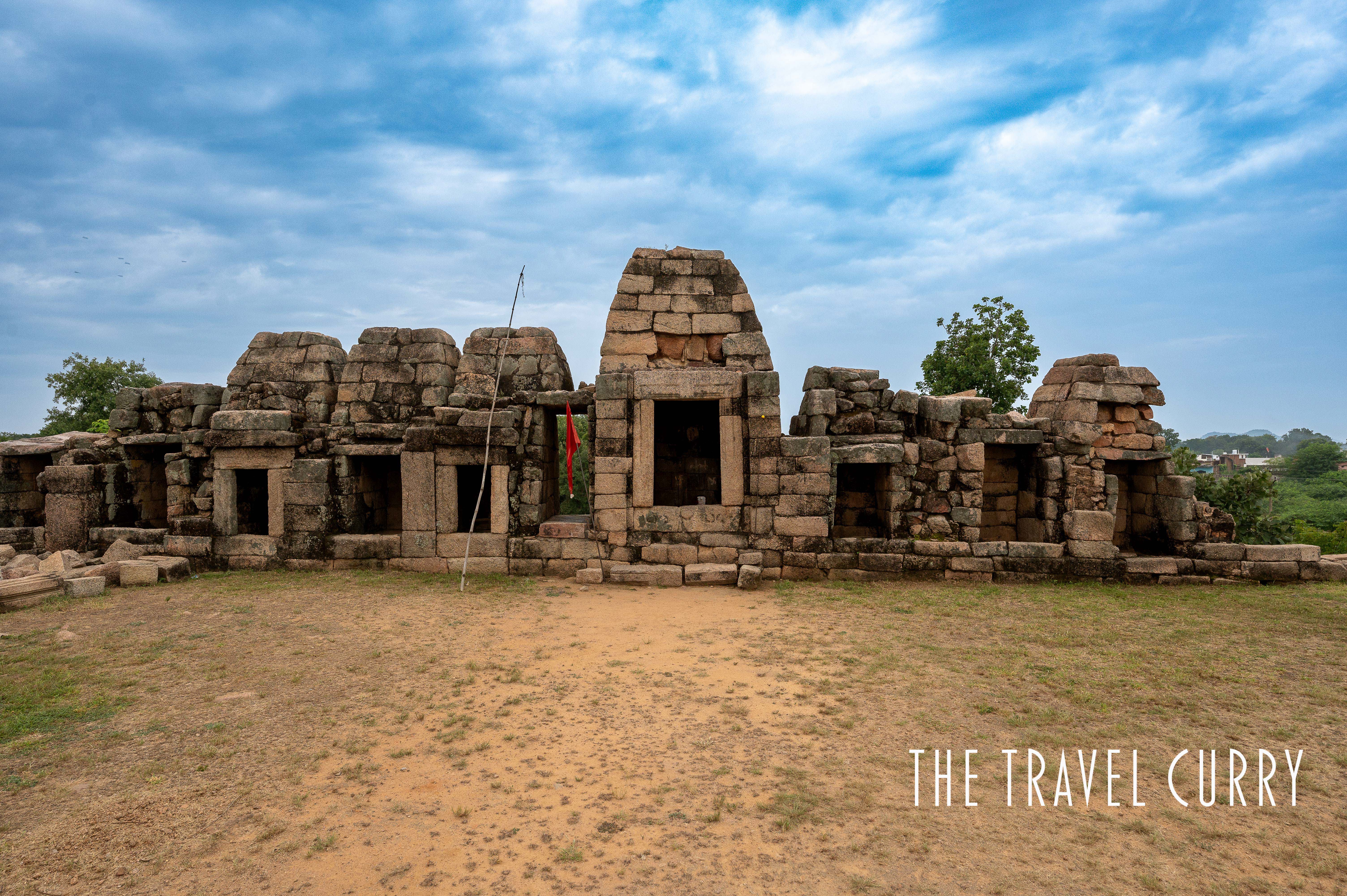
This temple is the most unique and believed to be the oldest Yogini Temples in the world. Unlike the cicular shape of Yogini temples, this one has a rectangular plan. Made out of local Granite blocks, the temple ruins stands on a 5 meter high plan with an open courtyard in the center. Out of the 65 shine cells originally built, only 35 survive and no statues are found in the cells.
Vishwanath Temple
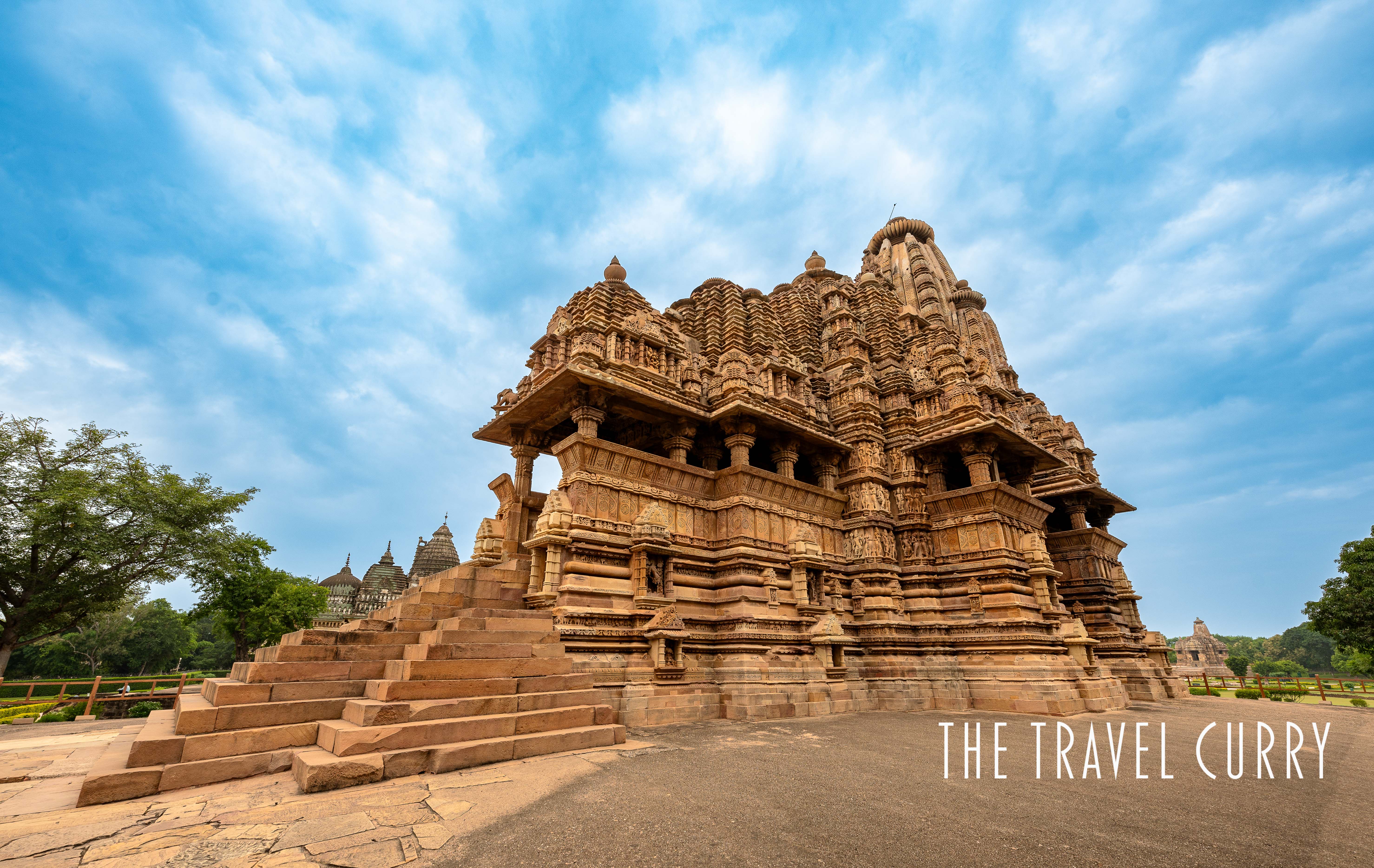
This temple is also dedicated to Lord Shiva. There is one main shrine at the Vishvanatha temple site, which is encircled by four smaller minor temples. Only two of the smaller shrines, nevertheless, are still standing today. Eastward orientation characterizes the major shrine. The temple to its east, is devoted to Shiva’s mount Nandi. The statue of Nandi, standing 2.2 metres tall, faces the main shrine.
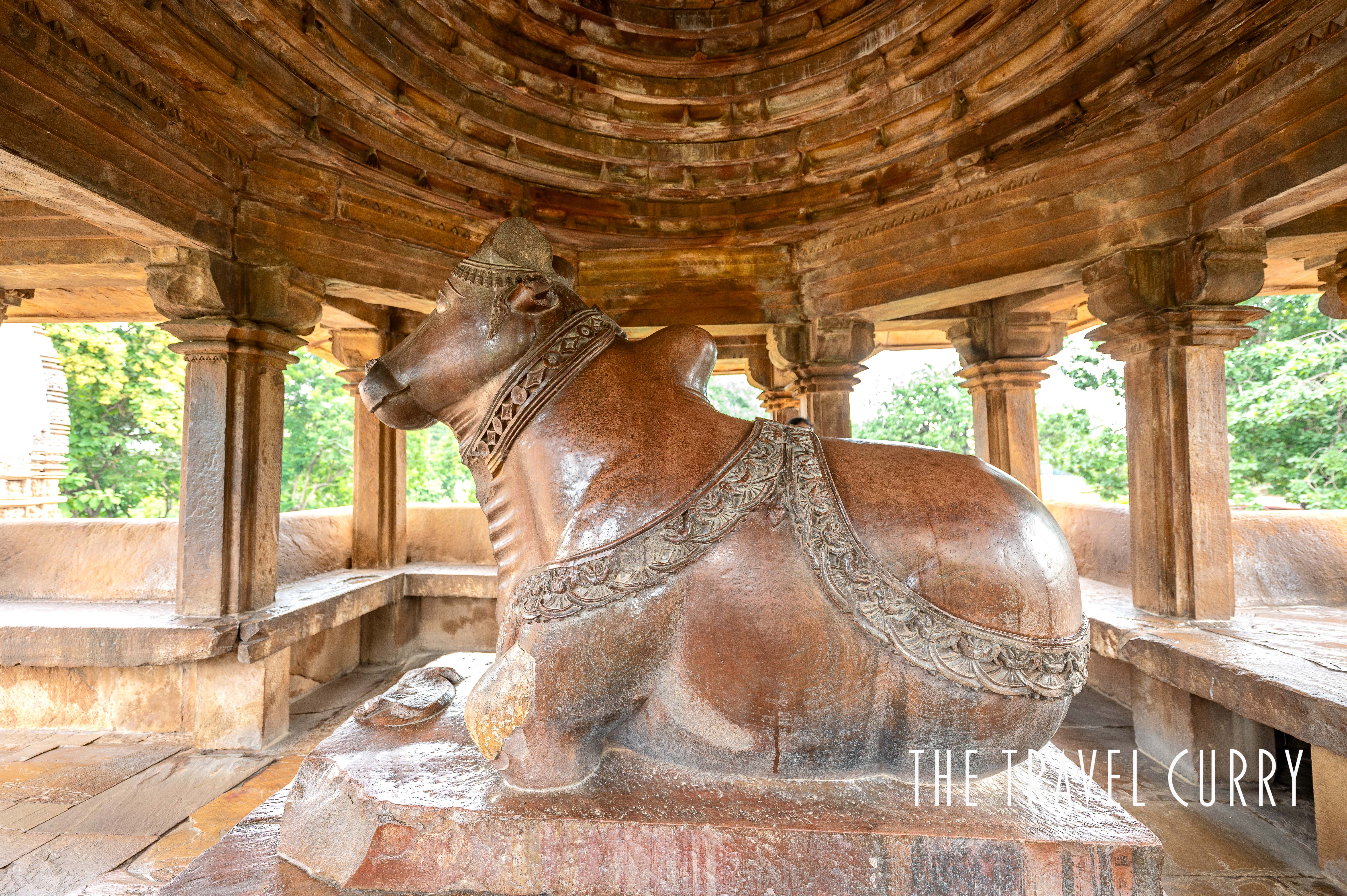
Parvati Temple
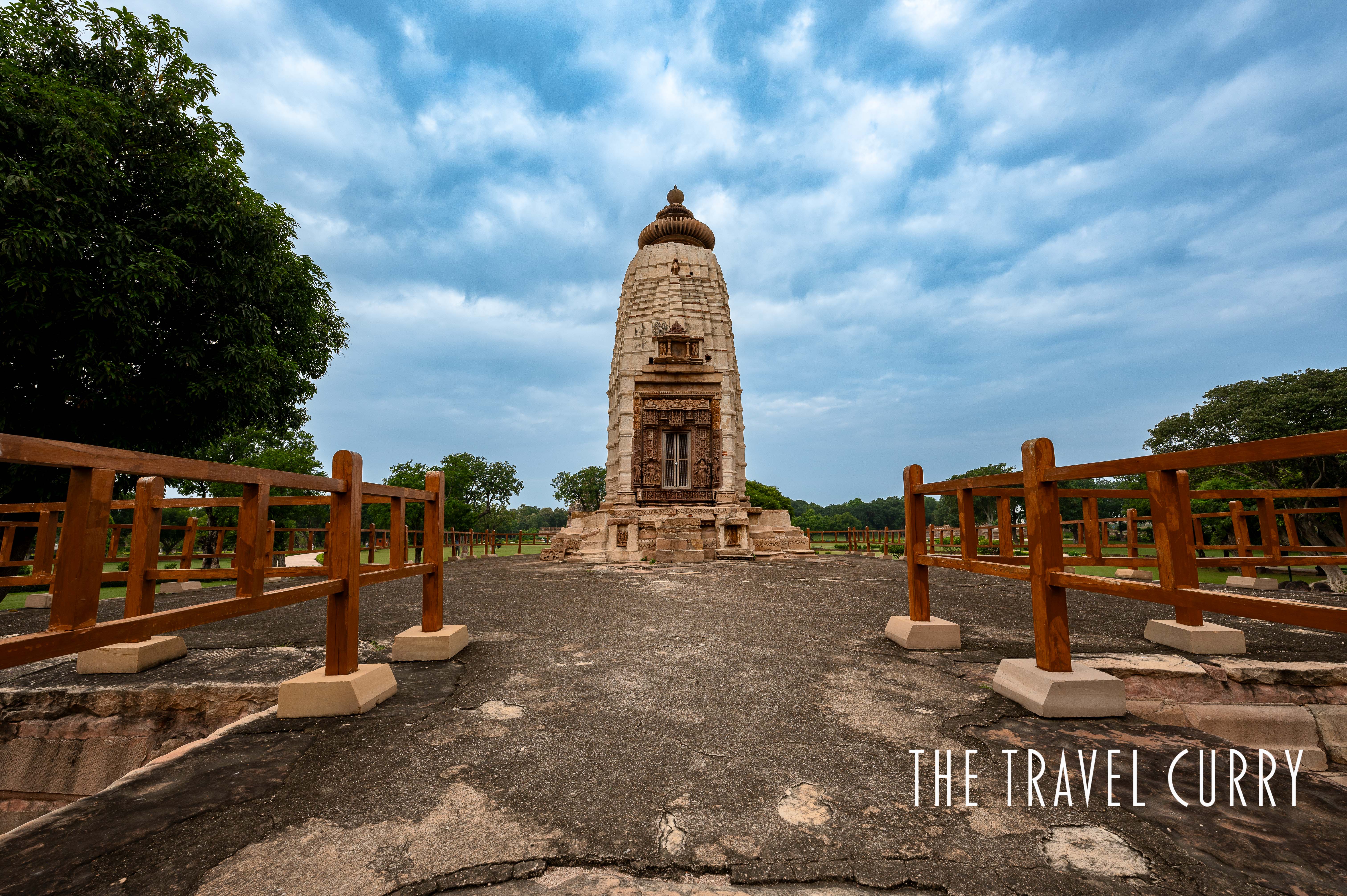
The Parvati Temple was a part of the Vishvanatha temple site in the south-west of the former. Devoted to Shiva’s consort, Parvati, the standalone temple is partially damaged now.
Chitragupta Temple
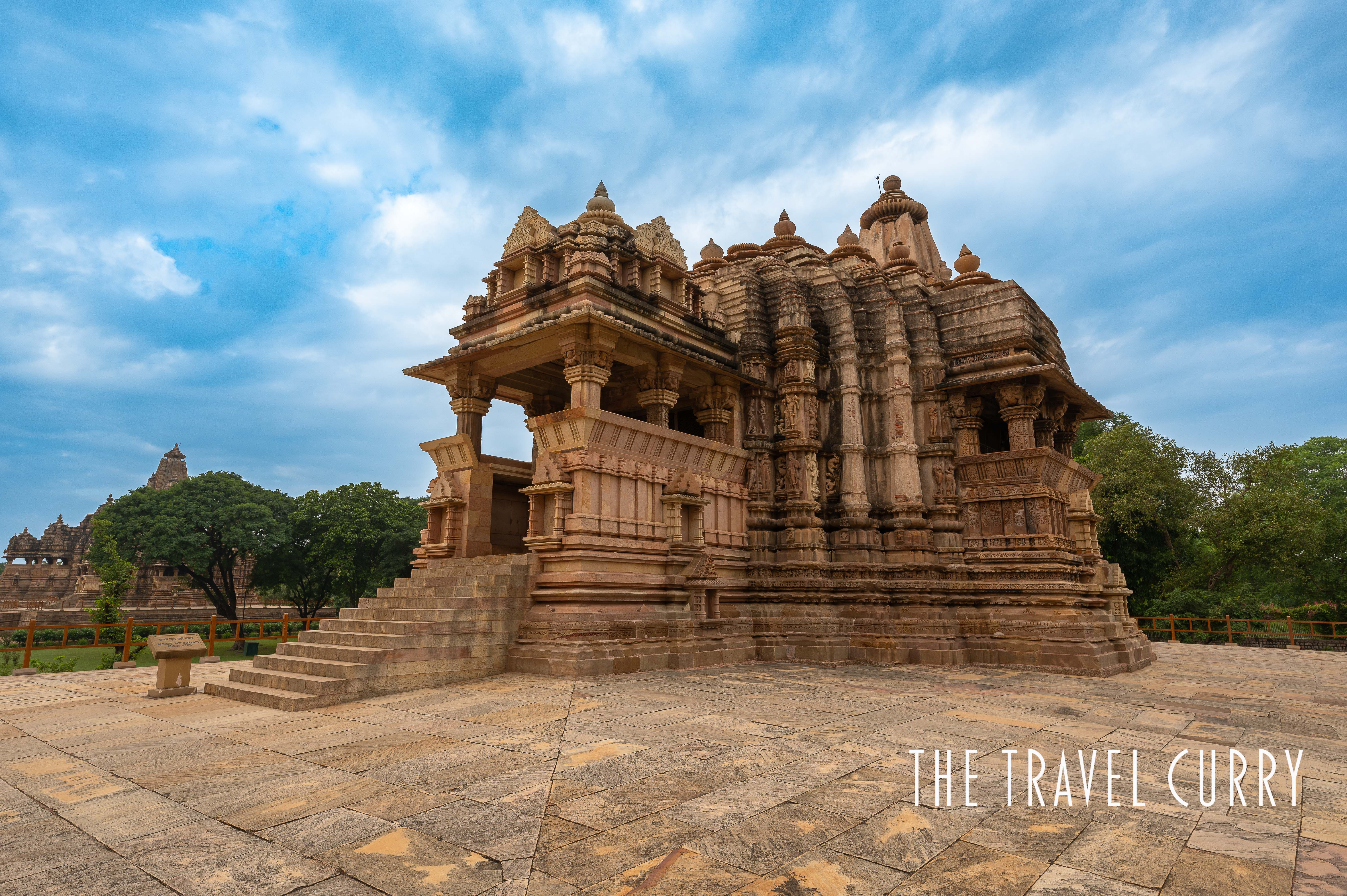
With a close resemblance to Jagadambi Temple, Chitragupta Temple is the only temple in Khajuraho dedicated to Surya, the Sun God. The main image in the sanctum of this temple is of Surya in a chariot, driven by seven horses. The temple’s origin dates back between 1000-1025 C.E which is the construction period between Kandariya Mahadev and Vishvanatha Temple.
Pratapeshwar Temple
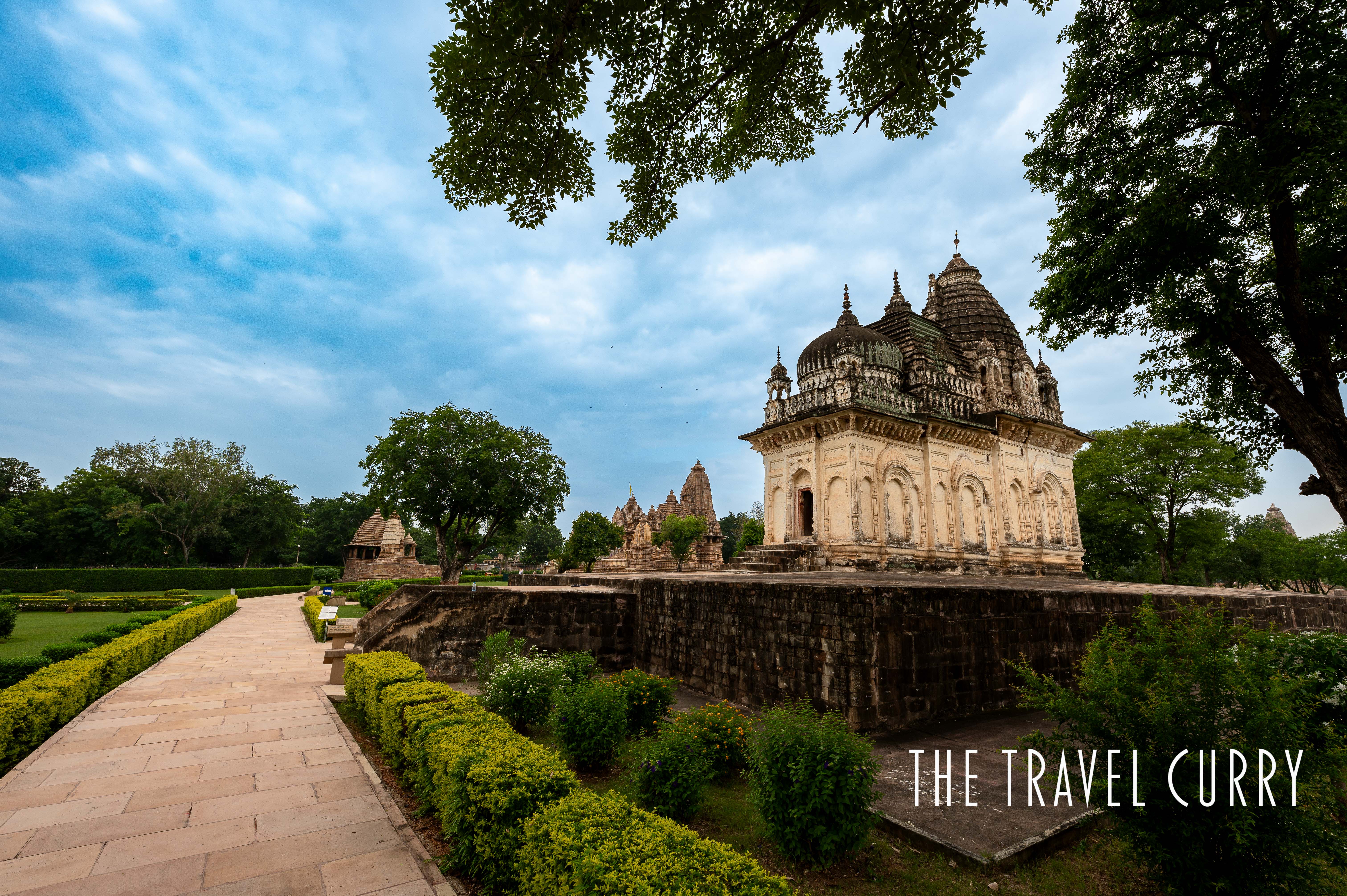
The final notable structure in Khajuraho is the Pratapeshwar Temple. Pratap Singh, the second Raja of Chhatarpur, founded it in the early to mid-19th century. It is possible that the monument was designed merely as a tribute to Pratap Singh. While the location does not conform to the overall theme of the western group of temples at Khajuraho, it does have a certain rustic charm, especially when compared to the heavily sculptured Vishvanath temple.
Additionally, Lakshmi Temple, Varaha Mandap and Devi Temple are other smaller temples in the Western Group. Most of the structures in Western group of Khajuraho temples have been restored. The intricate carvings and erotic stories on each wall are proof of the architectural brilliance of those times. It is noteworthy how these temples were built without modern tools or machinery with utmost precision and attention to detail.
The Eastern Group of Temples
The Eastern Group is located on the east side of the Western
Group. These are the main temples in this group:
• Bramha Temple- The Bramha Temple It is a robust little
structure that stands on a square plan that consists of only a sanctum and a
porch. The walls of the temples are unadorned with heavy figurative work.
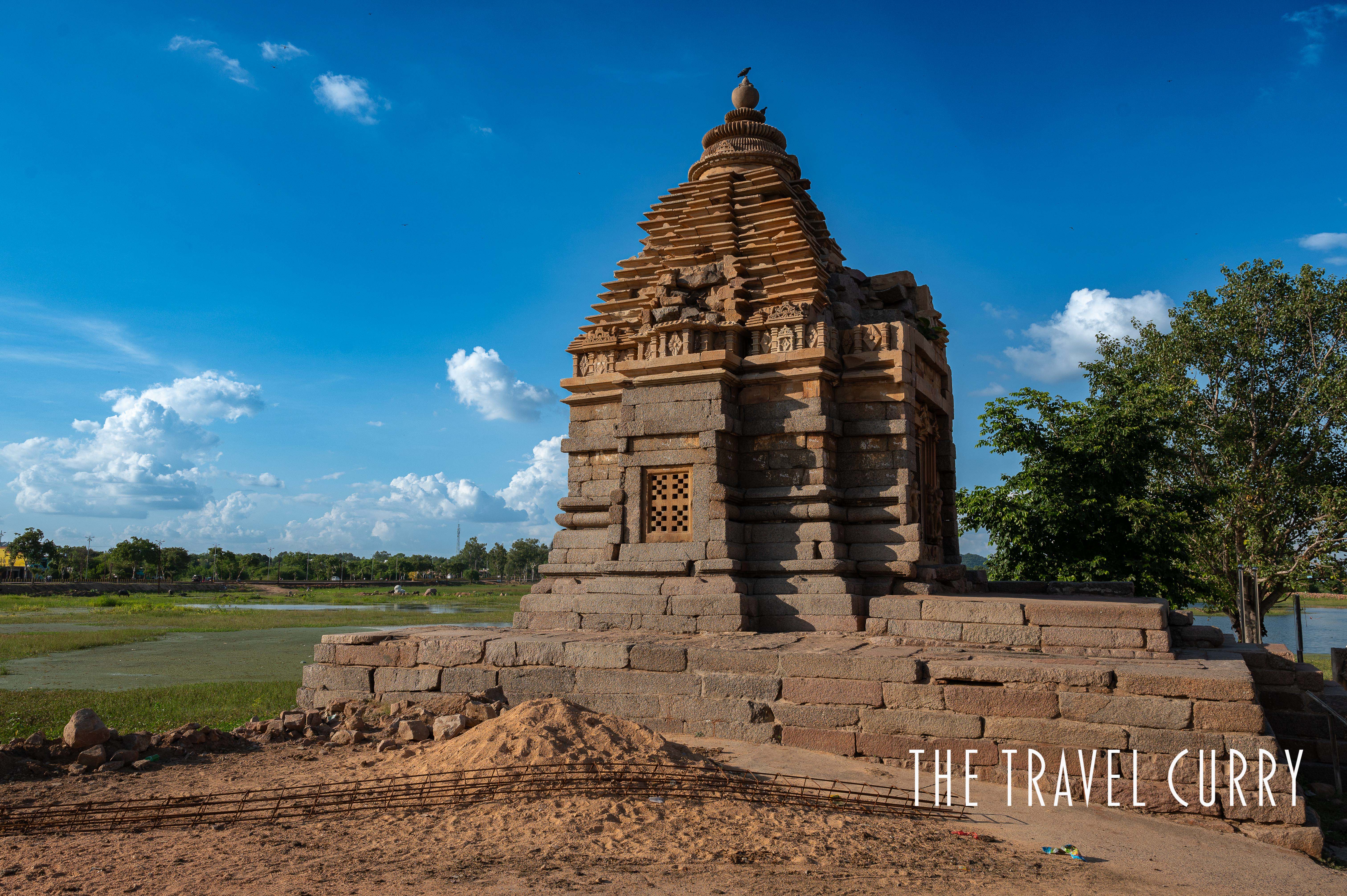
• Javari Temple- Devoted to Lord Vishnu, the Javari Temple is similar in style to the Chaturbhuj Temple. The temple has miniature sculptures on the exterior walls.
• Vamana Temple- Close to the Bramha Temple lies the ornate Vamana Temple, measuring 19 meters in length and 13.9 meters in breadth. This temple is an ode to the dwarf incarnation of Vishnu. Around the temple are two band of sculptures with almost 3000 figures including gods, their consorts, female figures, and mythical creatures.
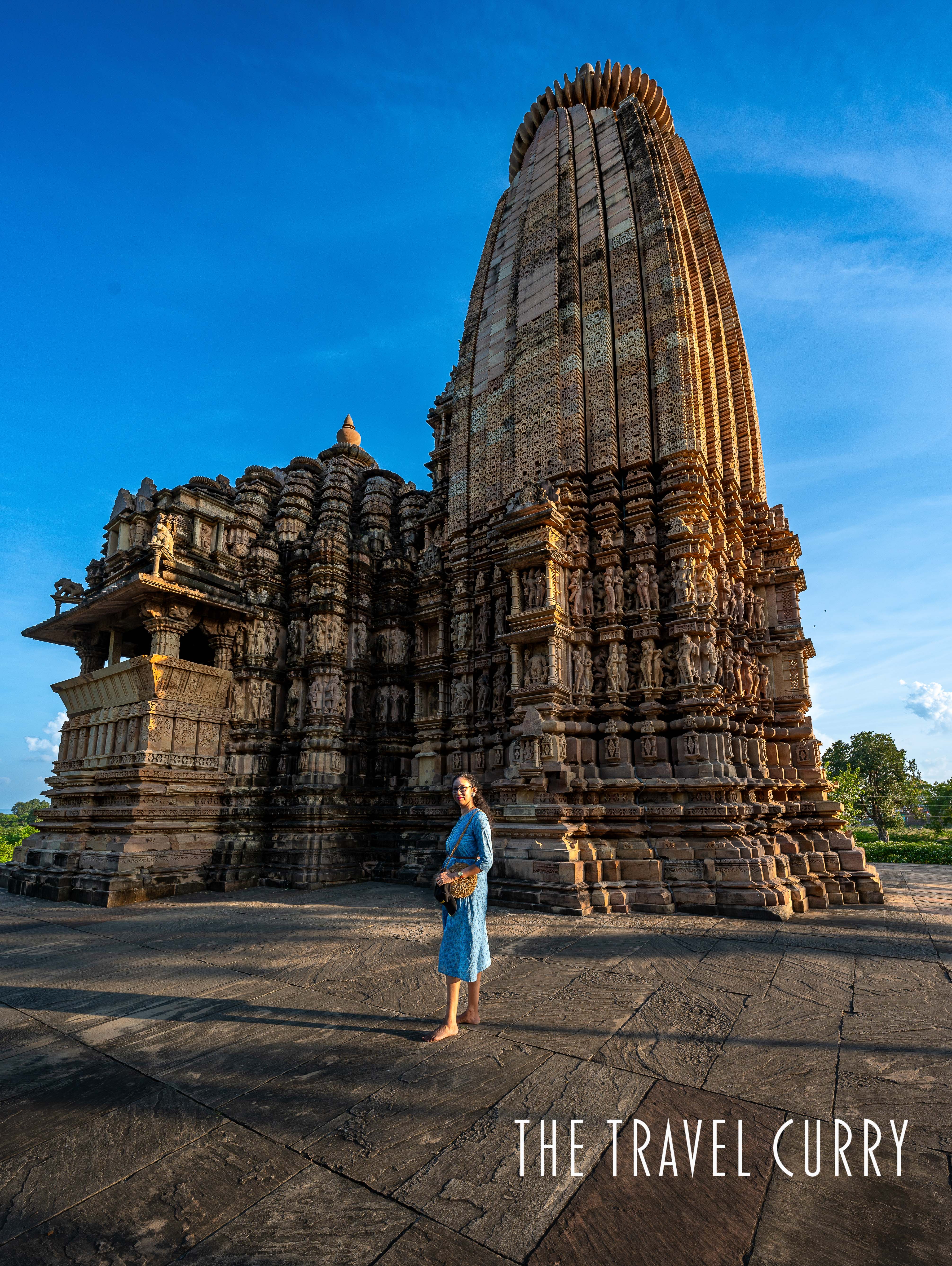
• Ghantai Temple- This is a ruined site now with just the pillars and plinth remaining. The temple is dedicated to Jain Tirthankara Adinatha.
The Southern Group of Temples
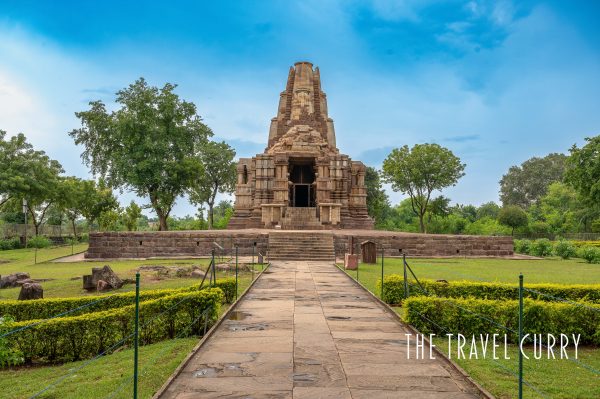
The Southern Group of monuments gets lesser footfall in contrast with the Western group of Khajuraho temples. It includes the Duladeo Temple and the Chaturbhuj Temple. Another lesser-known and unrestored structure is of Bijamandal temple ruins.
Best time to visit Khajuraho
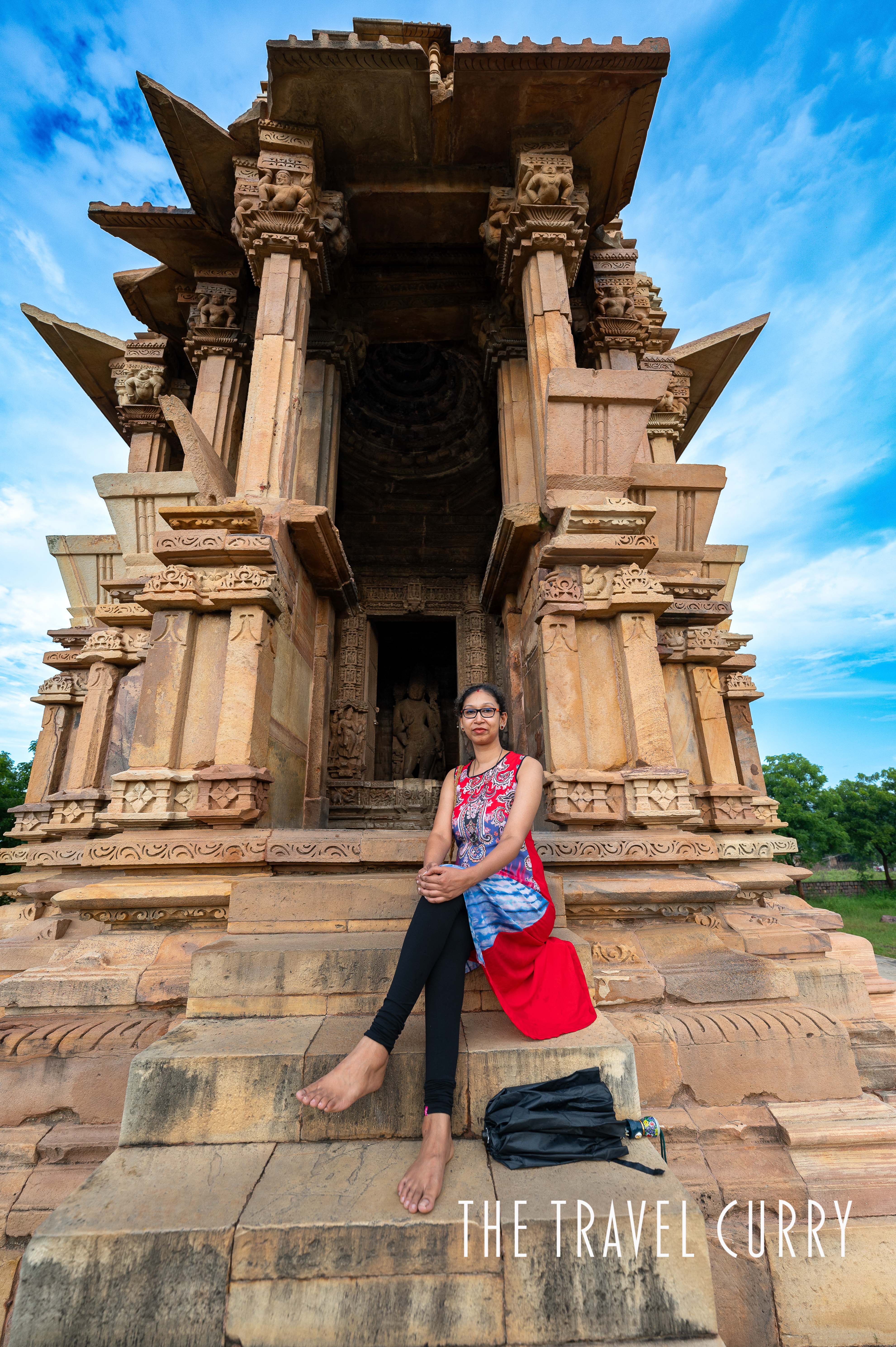
The months of October through March are the ideal times to visit Khajuraho because of the pleasant weather that makes it ideal for touring the temples. We recommend visiting in the last week of October though. It was extremely warm during the Gandhi Jayanti long weekend. Watching cultural performances against the backdrop of these amazing temples is also highly recommended during the annual Dance Festival, which takes place in February.
We recommend starting the temple visit early in the morning to avoid crowds and to experience the serene and spiritual ambiance. Guided tours are also available, which can provide deeper insights into the history and significance of the temples. If the weather is right, you can tour the Western Group of temples in the morning and finish the other two groups in the afternoon. However, it is best to visit the Western Group in one day and club the others for the next day.
What to wear to Khajuraho Temples
Since the weather remains warm, it is advisable to wear light cotton fabrics. Also, heels are a big no. Wear sports shoes or flats as you’d have to walk a lot. Dress up decently to the temple premises to maintain the decency of the place. Additionally, it is okay to wear sleeveless or midi or three-fourths in Khajuraho; unlike the Dilwara Jain Temple in Mount Abu where a strict dress code is followed.
Summing it up
The temples in Khajuraho are a treasure trove of art, architecture, and spirituality. In short, they offer a unique glimpse into the rich cultural heritage of India. With their intricate sculptures, stunning architecture, and beautiful surroundings, a visit to these temples is a truly enriching experience. Whether you are a history enthusiast, an art lover, or a spiritual seeker, Khajuraho’s temples are a must-visit destination that will leave you awe-inspired and mesmerized.

